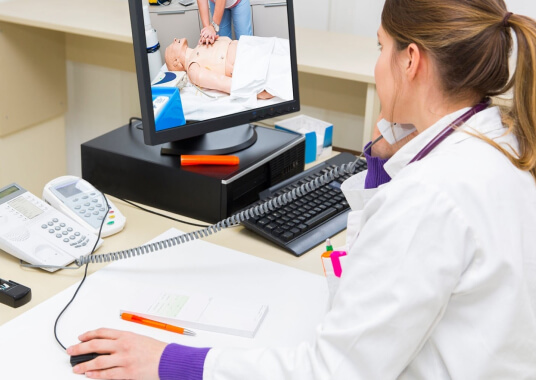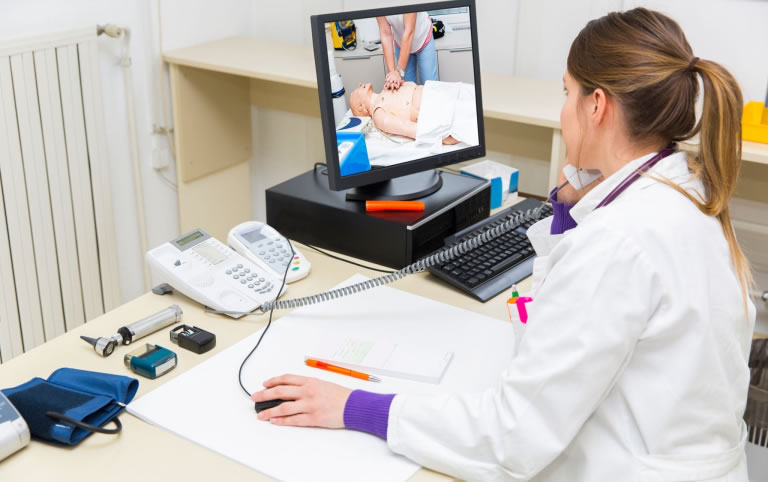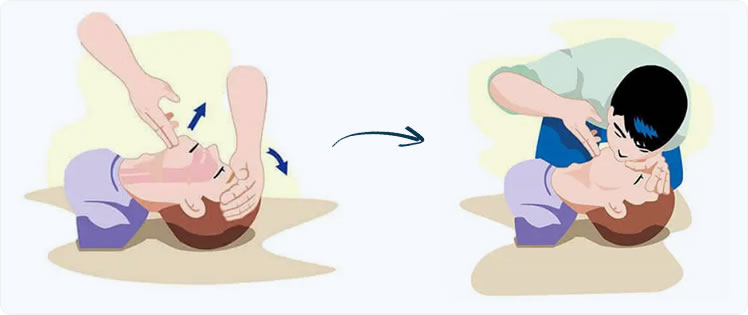CPR, First Aid, BLS, ACLS, PALS certifications.


Get certified in Adult, Child, and Infant CPR, plus AED use, with our 100% Online CPR/AED Course. Complete it in under 2 hours, enjoy unlimited quiz retakes, and earn instant certification valid for 2 years.
![]() (111,773 reviews with 4.8 stars)
(111,773 reviews with 4.8 stars)
$14.95 $24.90
| Chapters | CE Credits | Validity | Cost | Duration | ECC | Exam Attempts | Wallet Card |
|---|---|---|---|---|---|---|---|
| 12 | 4.0 | 2 Years | $14.95 | 1-2 Hrs | Compliant | Unlimited | Download/Print/Mail |
After every 30 chest compressions, you should open the airway and deliver two rescue breaths. Providing rescue breaths, when possible, significantly increases the person’s chances of recovery.
Use the head-tilt, chin-lift technique to open the airway effectively:
This position helps open the airway so you can deliver effective breaths.

If the breaths don’t go in, continue with chest compressions at the 30:2 ratio. Try not to pause compressions for more than 10 seconds at any point.
Keep giving cycles of 30 compressions and 2 breaths, maintaining a rhythm of 100 to 120 compressions per minute, until EMS or an Automated External Defibrillator (AED) arrives—or until the person begins to show signs of life.
If the person starts breathing again, roll them gently onto their side into the recovery position. This helps drain any fluids, like vomit, from the mouth. As you move them, support the neck, head, and back carefully.
[2021 Interim Guidance] During COVID-19, some lay responders may be hesitant to give rescue breaths due to fear of transmission. If that’s the case, it’s still recommended to perform hands-only CPR.
This chapter in your Online CPR/AED Course prepares you to respond with confidence during adult CPR by understanding how and when to give effective rescue breaths.